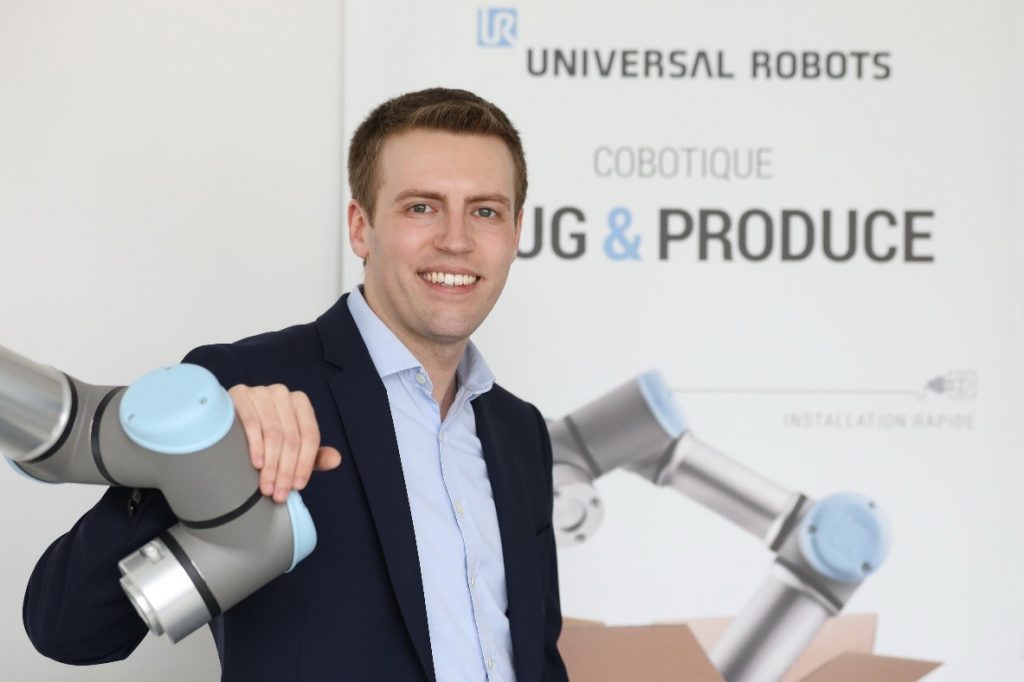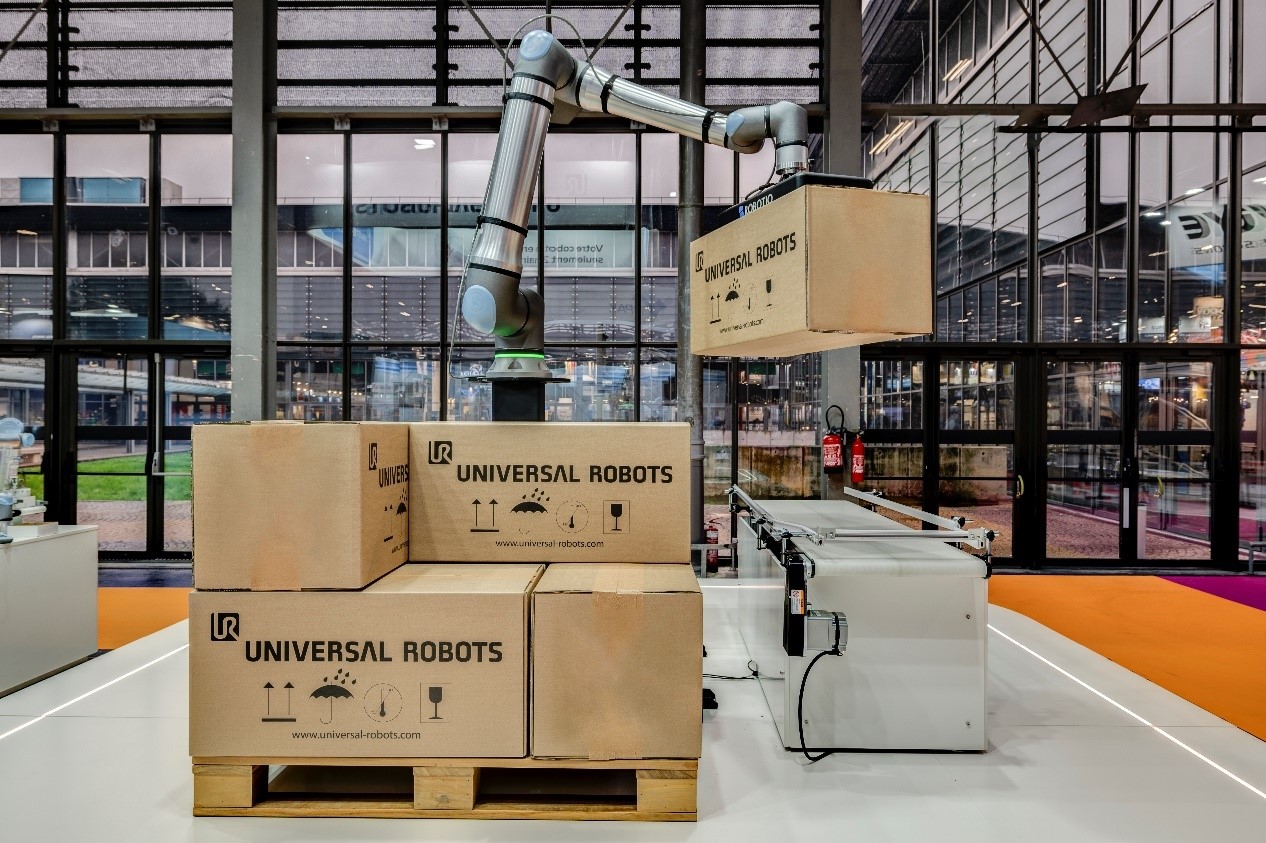[ad_1]
The testimonials from the OSÉ and ARMTOP companies that we have previously collected leave little room for doubt: cobotics is becoming an essential tool for industrial SMEs and mid-sized companies, particularly for welding workshops. For this last article in our file dedicated to cobot welding, we asked Martin Duterte, engineer at Universal Robots (UR), to explain the details of the integration of UR cobots.

Universal Robots is a leading supplier of collaborative robots (cobots) used in a wide range of industries and in the education sector.
The company founded in 2005 and based in Odense, Denmark, aims to create a world where “people work with robots, not like robots.” »
Martin Duterte is responsible for Universal Robots’ partner integrator network.
Engineering techniques: Cobots for welding are becoming more popular. What are the reasons for this success ?
Martin Duterte : It has been more than 40 years since the automotive industry adopted industrial robotics. Although traditional robots can produce the same series of parts, at very high rates, for several years, they are not at all flexible. Robotic solutions are therefore poorly suited to workshops producing small and medium-sized series, particularly in welding.
Cobotics meets the needs of these workshops, because it fills skills shortages partly linked to the numerous retirements of experienced welders. The cobot is, in a way, an assistant to the qualified welder, which allows him to increase his work capacity, without replacing him.
The welder ends up with a tool that is easy to program, with a professional interface developed specifically for welding by the equipment manufacturer. The welder only has to select the different stages of the arm’s trajectory and adjust its parameters, without ever having to touch the code.
Once the series is finished, he can then move on to another type of part, since reprogramming the cobot takes very little time.
Welding is one of our development priorities, along with palletizing and loading/unloading machines.

How is the integration of cobots in companies going?
UR does not support the integration of cobots, because our 1,000 employees around the world focus on the development of robotic arms: mechanical interface design, programming interface, safety functions, etc.
For integration, our customers have two possible approaches. Either they train internally a person who has a technical profile, generally a technician. After 5 days of training, he will know all the functionalities of the cobot and will be able to call on our UR+ ecosystem for the installation of equipment[1] corresponding to its needs, on the cobot or around the cobot.
While this “Do It Yourself” approach has made UR successful so far, we are aware that it does not suit everyone, as it requires assigning qualified personnel to the project. The other alternative is to directly call on a UR cobot integrator, who will develop a “turnkey” installation, based on specifications.
Let’s take the example of welding and the Armtop company. In the case of Armtop, the application was developed entirely by the voestalpine company Böhler Welding, a well-known supplier of power sources and welding consumables. When a need for cobotics is identified, Böhler then offers to its client to organize an on-site demonstration.
Of course, Böhler is not the only integrator on the market when it comes to cobotized welding. Fronius also offers its solutions, as does Migatronic, Lorch or Trumpf.
How does your interface facilitate the integration of UR cobots?
The programming interface of the UR cobots is our biggest strength, because we are looking for the best balance between ease of use by beginners and very advanced development possibilities for people with programming skills.
On the user side, the PolyScope interface and its instruction library allow graphical configuration in an intuitive manner. As the instructions are then compiled into Python language, the advanced user who wants to program their robot entirely “by hand” is able to do so.
This considerably broadens the possibilities of integration and developments, which constitutes a major difference compared to traditional robotics.
Our approach to cobotics is completely different, since we seek maximum flexibility. We deliver a standard configuration of the cobot, capable of responding to more than 95% of applications. On the one hand, this allows us to build up a stock of cobots and deliver anywhere in Europe in 15 days, compared to 8 to 12 weeks for traditional robotics.
This standard, ready-to-use configuration includes a card with 16 all-or-nothing digital inputs/outputs, 8 dual-channel safety digital inputs/outputs[2] as well as Ethernet IP, MODBUS TCP, PROFINET communication protocols.
And for the 5% of special cases which are not covered by the standard configuration, it is always possible to install the missing gateway modules and connect them via Ethernet to the cobot to obtain the desired configuration.
Finally, to make integration as easy as possible, a list of all accessories compatible with Plug And Play with our cobots is provided. available on our site in the UR+ section. All equipment referenced in this category has been subject to a certification process between UR and the manufacturer. In general, accessories such as cameras and grippers are supplied with an application called URCaps installed on a USB key and which plugs into the cobot’s programming console in order to be able to control the equipment.
[1] Grippers, cameras, conveyors, sensors of all kinds, welding torches, the possibilities are endless!
[2] to accommodate external emergency stops, light safety barriers, etc.
[ad_2]
Source link